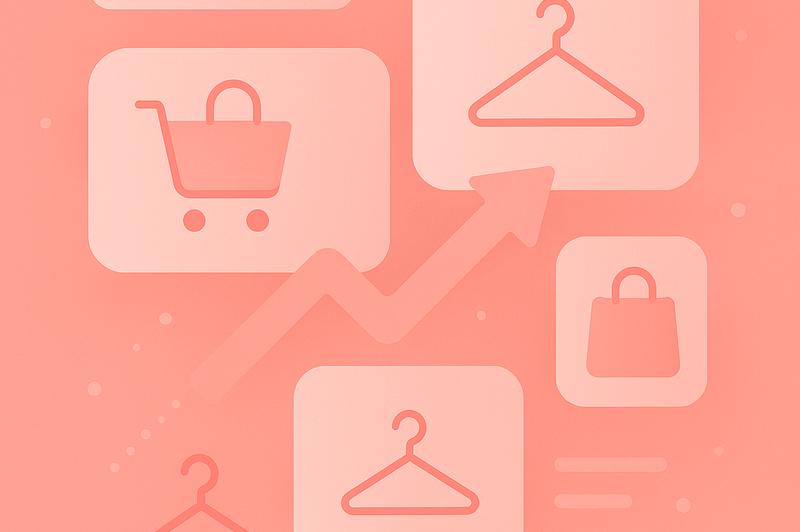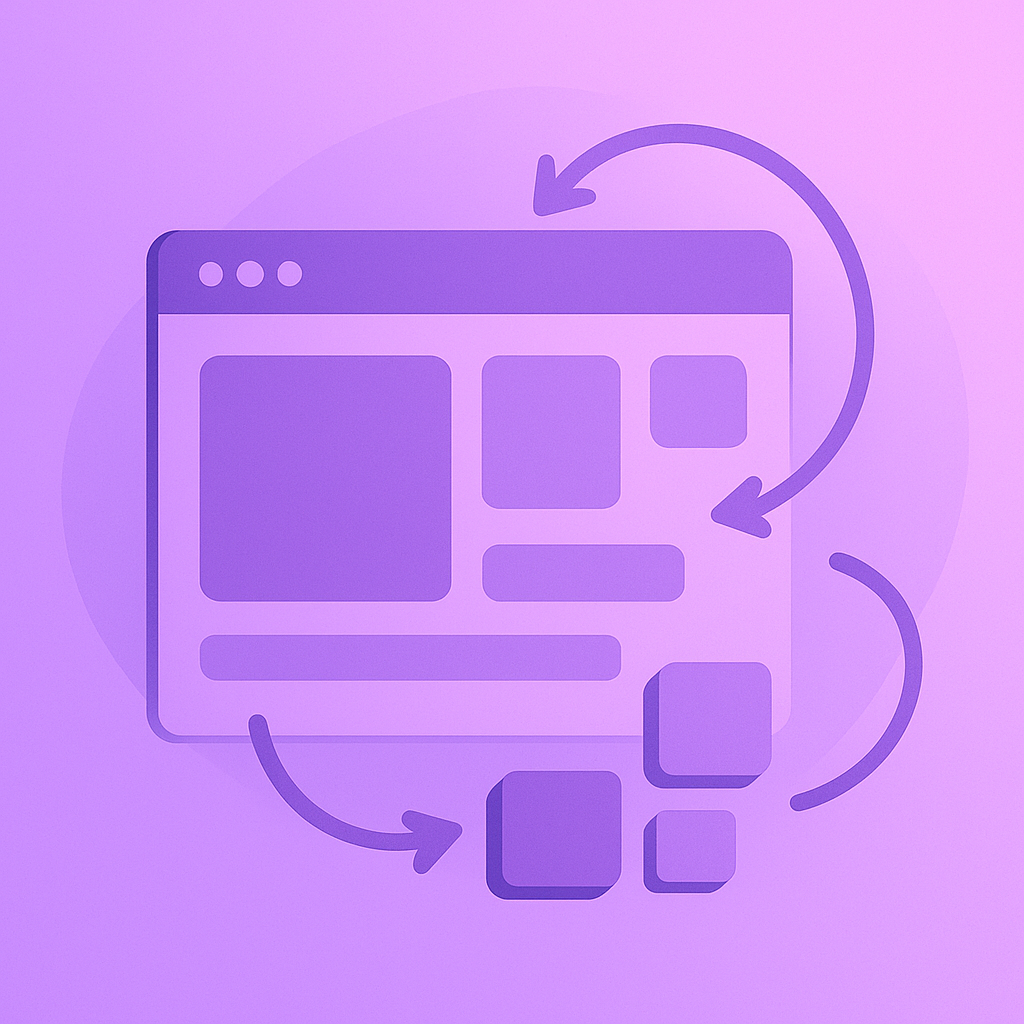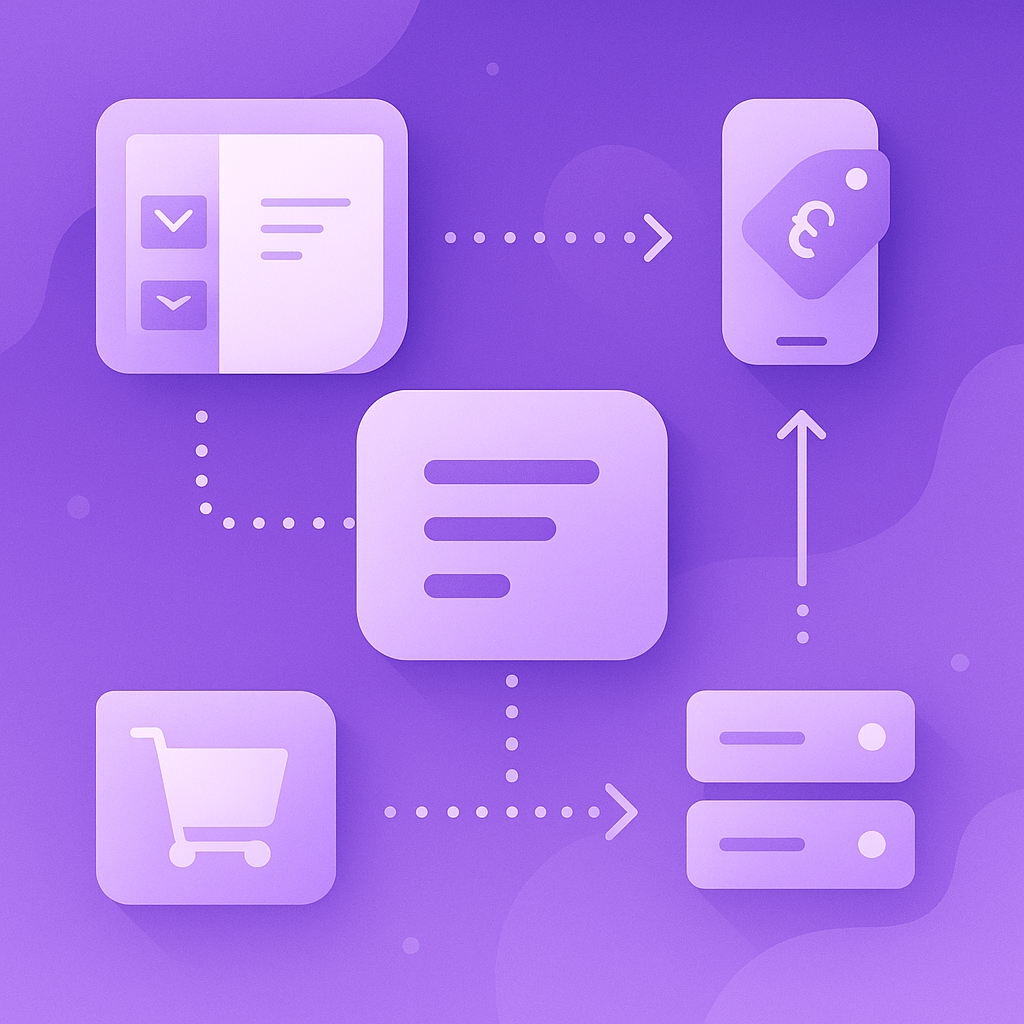In the fast-paced fashion industry, a slow or unstable website can cost serious money. Many brands that started on platforms like WordPress (WooCommerce), Wix, Magento, or custom-built solutions found themselves held back by sluggish performance, crashes during big sales, or limited growth features. The good news? Plenty of well-known fashion and lifestyle brands have switched to Shopify – and seen their sales climb, sites speed up, and businesses scale like never before. This article highlights some of those success stories and why Shopify has become the go-to choice for fashion retailers seeking better results.
Big Brands That Made the Move to Shopify
Gymshark: From Black Friday Crash to 197% Peak Sales Growth
Gymshark, the UK-based fitness apparel giant, learned the hard way about platform limitations. Back when their site ran on Magento, a Black Friday surge crashed their website for 8 hours, causing an estimated £100,000 in lost sales Determined not to repeat that disaster, Gymshark migrated to Shopify Plus – and never looked back. The results were almost immediate: during peak traffic events, Gymshark’s revenue jumped by 197% with zero downtime, even during frantic flash sales. The switch to Shopify gave Gymshark a site that could handle colossal traffic spikes and a platform that easily scales globally alongside the brand’s growth. In short, Gymshark went from worrying about website crashes to confidently running multi-million-pound product launches, thanks to Shopify’s reliable performance.
Banana Republic: Powering Omnichannel Retail on Shopify
Banana Republic, the fashion retailer under the Gap Inc. umbrella, is a heritage brand that reinvented its online strategy with Shopify. The company’s previous e-commerce system struggled to offer a seamless experience – especially on mobile – and made it tough to integrate online and physical store operations. Since migrating to Shopify Plus, Banana Republic has transformed its digital customer journey. The brand markedly improved its mobile shopping experience and enabled much tighter integration between the online store and brick-and-mortar outlets. Content updates that once were a headache are now straightforward, allowing the team to keep the site fresh without technical roadblocks. The result is a smoother omnichannel experience: customers get a consistent, user-friendly journey whether they’re browsing on a phone or shopping in a boutique. For Banana Republic, Shopify’s scalability and ease-of-use have meant more engaged shoppers and a retail platform built for modern consumers’ expectations.
J.Lindeberg: 70% Sales Increase with a Modern Shopify Store
High-end fashion brand J.Lindeberg had big ambitions – combining high-impact branding with strong e-commerce growth – but their custom-built website was falling short. After deciding to replatform to Shopify Plus, J.Lindeberg achieved the brand experience they wanted and saw a major uptick in business metrics. In fact, sales increased by 70% after switching to Shopify Plus. The company rebuilt its site in just 16 weeks, turning a basic transactional store into a visually rich, immersive shopping experience. Alongside that sales jump, both average order value and conversion rates rose by about 7% – a testament to how better design and performance convert more browsers into buyers. J.Lindeberg’s story shows that even for established fashion labels, a move to Shopify can rejuvenate the brand online and deliver a healthier bottom line. The flexible design options and reliable performance of Shopify allowed J.Lindeberg to focus on creative branding and merchandising, while the platform quietly handled the heavy lifting of transactions and traffic scaling.
Horizons Lointains: Doubling Black Friday Sales After WooCommerce Woes
Not only mega-brands reap the rewards of migrating to Shopify. Horizons Lointains, a chic women’s fashion boutique from France, switched from a WooCommerce (WordPress) store that was buckling under high traffic. Their old site had frequent bugs and even went down during peak sale periods, costing them precious revenue. In 2023, just two weeks before Black Friday, Horizons Lointains launched their new site on Shopify Plus – and the payoff was immediate. Over the Black Friday/Cyber Monday weekend, the brand generated twice as much revenue as the previous year. Crucially, the website held up brilliantly with fast speeds despite surging traffic. “We have never regretted our decision to migrate from WooCommerce to Shopify,” said the brand’s Head of Technology, noting that with the right platform (and a solid marketing strategy) they were able to capitalize fully on the holiday rush. By leaving behind the instability of their old setup, Horizons Lointains not only recaptured lost sales but actually doubled their year-on-year takings during the biggest shopping weekend of the year. For a growing boutique label, that kind of result is transformative. Shopify gave them the rock-solid foundation to scale promotions without worrying if the site would crash at the worst moment.
Bohemia: Artisan Craft Brand Quadruples Sales
Bohemia, an artisan lifestyle and accessories brand, provides a great example of how Shopify helps niche brands flourish. Founder Jenny Lockton loved Bohemia’s mission of supporting global artisans, but the company’s Magento-based site constantly undermined their efforts by crashing or failing to process payments – in fact, it went down the moment it launched, and the technical troubles never ceased. Frustrated and “feeling fleeced” by the old platform, Bohemia migrated all its online storefronts to Shopify Plus in search of something dependable. The relief was instant: “Shopify has been our savior. I no longer worry about our sites crashing or not accepting payments. Shopify is our dream come true,” Lockton said. With a stable Shopify site in place, Bohemia and their agency partner rolled out new marketing tools (like smart pop-ups for engaged browsing) and finally got to focus on the business itself rather than firefighting tech issues. The impact on sales has been staggering – Bohemia’s sales now routinely quadruple compared to their pre-migration levels, and at one point they doubled sales again after introducing a key conversion optimisation. This sustained growth over multiple months proved that a reliable, flexible platform can unlock a brand’s true potential. For Bohemia, Shopify’s ease-of-use means the founder can spend time expanding artisan partnerships and designing products, confident that the online store will keep pace with any surge in demand. The brand is now making a greater social impact and revenue, all because they chose a platform that works for them, not against them.
(Other fashion and lifestyle brands share similar success after moving to Shopify: for instance, Red Dress Boutique saved over $100,000 per year in platform fees by leaving Magento, while still achieving double-digit annual growth within months of migrating. And Spanish sneaker brand Morrison saw its conversion rate jump 15% after it escaped constant Black Friday crashes on its old system – now it handles both online and in-store sales seamlessly on Shopify. These cases echo the same message: Shopify helps brands grow without the growing pains.)
Why Shopify Makes a Difference for Fashion Businesses
What is it about Shopify that consistently delivers such positive business outcomes for fashion and lifestyle brands? In short, it solves many of the pain points that plague other platforms, turning formerly frustrating websites into high-performing sales machines. Here are a few key reasons Shopify stands out:
-
Rock-Solid Performance and Uptime: Shopify’s infrastructure is built to handle huge traffic spikes without missing a beat. The platform boasts 99.9% uptime for all stores, meaning no more panicked calls about a crashed site when your sale goes viral. Brands that used to dread events like Black Friday now sail through them with confidence. For example, after migrating to Shopify, one retailer noted their site maintained fast speeds even under unusually heavy traffic – a far cry from the slowdowns and outages they experienced on WooCommerce. A faster, always-on site keeps customers happy and buying instead of bouncing in frustration.
-
Faster Pages & Better Mobile Experience: In fashion e-commerce, a gorgeous site means nothing if it’s slow or clunky on smartphones. Shopify’s platform is highly optimised for speed and mobile responsiveness, giving shoppers a smooth experience. This has a direct impact on sales. One fashion label saw its conversion rate jump by 135% just weeks after switching to Shopify, alongside a drop in bounce rate and longer browsing sessions. The reason? Their new Shopify site was finally delivering a user-friendly mobile shopping journey, whereas previously 75% of their mobile visitors struggled with poor checkout flow. On Shopify, pages load quickly and the checkout is seamless, which means more visitors actually become customers. In an age when most shoppers browse on phones, Shopify’s mobile-first approach is a game changer.
-
Scalability for Growing Sales & Global Reach: Shopify grows with you. Whether you’re expanding your product line, launching in new countries, or suddenly blowing up on social media, Shopify scales without expensive upgrades or rebuilds. Gymshark’s team chose Shopify Plus specifically because they needed a platform that could scale on demand globally – and it delivered, supporting Gymshark’s explosive growth with localized stores across continents. Similarly, brands that outgrew basic solutions like Wix have found that migrating to Shopify opens the door to unlimited products, high-volume orders, and multi-currency storefronts, all under one roof. You won’t hit a ceiling with Shopify; it’s built for brands with big dreams and spares you the technical nightmares when you suddenly have ten times more visitors or products.
-
Seamless Omnichannel and Integration: Fashion shoppers often hop between online and offline – browsing a look on Instagram, trying in-store, buying on the website later. Shopify excels at connecting these dots. Its system easily ties together your online shop, physical point-of-sale (for pop-ups or boutiques), and even marketplaces or social media stores. After moving to Shopify, Morrison (the sneaker brand) was able to manage its website, physical stores, and B2B orders from a single platform, something unimaginable on their old setup. Meanwhile, Banana Republic’s switch to Shopify enabled better integration between e-commerce and retail stores – now customers get a cohesive experience and the brand gets a unified view of inventory and sales. This omni-channel strength means more sales opportunities and happier customers. Shopify also integrates with countless third-party apps and services, from Instagram Shopping to inventory management systems, so fashion businesses can plug in the tools they need without custom development headaches.
-
Ease of Use & Time Savings: Shopify’s user-friendly interface and code-free customisation means your team can update the site or launch campaigns without waiting on developers. For fashion marketers and store managers, this is liberating. Take it from a brand that moved off a developer-dependent platform: “It’s a huge time saver. We can make changes on the fly now, so I can focus on more strategic areas of the business instead of getting bogged down working on the site.”With Shopify, adding a new product, tweaking a homepage banner, or publishing a lookbook can be done in minutes, not days – empowering your creative and marketing teams to react quickly to trends. This agility often translates into better sales performance, because you’re always able to keep the store fresh and aligned with what customers want right now, rather than being stuck with week-long update lead times. Moreover, Shopify takes care of the technical maintenance (security updates, hosting, and so on), so you can spend your time curating the next season’s collection or engaging with customers, instead of wrestling with website code.
-
Built-In Tools to Boost Sales: Shopify comes packed with features that drive conversions and customer engagement by default. Its checkout is famously streamlined (with conveniences like Shop Pay one-click payment), helping reduce abandoned carts. The platform also offers features like gift cards, discount codes, product reviews, and wishlists via apps – all of which can encourage higher spending and loyalty. Many brands find that once on Shopify, they can easily implement new sales tactics: for instance, Bohemia quickly integrated a conversion optimisation tool (via a Shopify app) that helped double their sales after launch. Another brand, after migrating, could finally run A/B tests and SEO optimisations in-house, leading to a 71% increase in sales thanks to a few smart site changes. Whether it’s enabling a smooth international checkout or adding a customer rewards program, Shopify gives fashion retailers the flexibility to add revenue-driving enhancements with minimal fuss. Simply put, it’s a platform designed to help sell, not just sit there looking pretty.
-
Reliable Security and Support: In fashion, protecting your brand image and customer trust is paramount. Shopify’s robust security (Level 1 PCI DSS compliant) ensures customer data and transactions are safe by default. No more worrying about plugin updates breaking your SSL or vulnerabilities in an old CMS. Additionally, Shopify’s support and vast expert community mean you’re never alone. Many fashion businesses partner with certified Shopify Experts (like web agencies such as Wolfdev or others) to get the most out of the platform. With reliable 24/7 Shopify support, any hiccups are resolved quickly, reducing downtime and keeping your shop open 24/7 for shoppers around the world.
Ready to Accelerate Your Fashion Business?
The evidence is clear: whether you run a global fashion label or an independent lifestyle brand, migrating to Shopify can supercharge your sales and streamline your operations. The brands profiled above moved away from WordPress, Wix, Magento and other setups because those platforms were holding them back. After embracing Shopify, they saw faster sites, higher conversion rates, greater scalability, and happier customers. In the competitive world of fashion, those advantages are like gold dust.
If your current platform is slowing you down or you’re simply hungry for better online results, it may be time to consider making the switch to Shopify. Imagine worry-free product launches, checkout queues flowing smoothly, and a store that’s as polished and professional as your brand. All of that is within reach.
Call to Action: Don’t let an underperforming website stunt your brand’s growth. Wolfdev offers a dedicated Shopify migration service to take you from frustration to success. As a Shopify expert based in the UK, Wolfdev can handle the heavy lifting of replatforming – ensuring your design, data, and SEO make a safe transition – so you can focus on what you do best: delighting your customers with great fashion. Get in touch with Wolfdev today (visit our Shopify Store Setup & Migration page) to start your journey. Switch to Shopify, and join the ranks of fashion brands that have elevated their online business to new heights. Your brand’s next chapter of growth and success could be just a platform change away!






